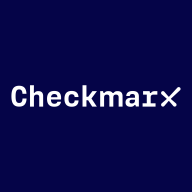

Checkmarx One and Check Point CloudGuard WAF compete in the security solutions segment. Check Point CloudGuard WAF appears to have a slight edge due to its comprehensive feature set, though Checkmarx One stands out for its user experience and support.
Features: Checkmarx One offers seamless integration, detailed code analysis, and a user-friendly interface for enhancing security processes. Check Point CloudGuard WAF provides advanced threat prevention, real-time traffic analysis, and strong protection through extensive monitoring capabilities.
Room for Improvement: Checkmarx One could improve vulnerability reporting accuracy, increase feature set depth, and enhance scalability for larger enterprises. Check Point CloudGuard WAF users seek better flexibility in configuration settings, enhanced reporting detail, and optimization of resource usage to meet growing demands.
Ease of Deployment and Customer Service: Checkmarx One is favored for straightforward deployment and responsive support, easing adoption. Check Point CloudGuard WAF's deployment is more complex, but users benefit from robust customer service, although it may require more technical expertise at setup.
Pricing and ROI: Checkmarx One is seen as cost-effective with lower setup costs, making it attractive for budget-conscious users and providing a satisfactory ROI. Check Point CloudGuard WAF has higher initial costs, but its extensive features justify the expense for many users who prioritize a long-term ROI despite the upfront investment.
When we are attacked, we can understand how important the solution is.
When you migrate to the cloud, it feels like saving 90% of your time.
Most of the operations happen in the background, so I do not spend much time on it.
They need to increase the number of people for 24/7 support.
They were responsive even before we committed to buying their solution.
I also received full technical support, especially during the implementation.
If I need to scale, I open a Whatsapp group with the director and the team, and we quickly proceed to do so.
They have sufficient resources, and there are no challenges from a scalability perspective.
It is very stable.
It is very stable, never crashing or giving me an error that I can see.
I did not have any issues in the last three years during which I had more than ten critical services running on CloudGuard.
I would rate the stability of this solution a nine on a scale of 1 to 10 where one is low stability and 10 is high.
The provider could improve by providing better guidance and support during the configuration process.
Future releases should include better bot mitigation, behavioral anomaly detection, compliance templates, advanced threat intel integration, and streamlined multi-cloud support to boost protection and usability.
A machine learning-based adaptive mode could help the WAF learn over time and auto-tune policies.
It could suggest how the code base is written and automatically populate the source code with three different solution options to choose from.
It is more expensive than f5, where we purchased everything as bundles, and Check Point costs more, but it is worth the money.
It is less costly than Cloudflare, Fortinet, and other vendors.
I know that its price is relatively expensive compared to other products but it gives benefits that are worth it.
Upon implementation and evaluation with third-party penetration testing, it meets rigorous security standards required for dealing with financial institutions.
It can protect against zero-day attacks and hidden anomalies.
The solution preemptively blocks zero-day attacks and detects hidden anomalies effectively.
My experience with the initial setup of Checkmarx One is straightforward; it is not complex compared to other tools that I have tried.
| Product | Market Share (%) |
|---|---|
| Checkmarx One | 10.4% |
| Check Point CloudGuard WAF | 0.3% |
| Other | 89.3% |


| Company Size | Count |
|---|---|
| Small Business | 27 |
| Midsize Enterprise | 18 |
| Large Enterprise | 16 |
| Company Size | Count |
|---|---|
| Small Business | 30 |
| Midsize Enterprise | 9 |
| Large Enterprise | 38 |
Check Point CloudGuard WAF offers advanced security for web applications and APIs with features such as intrusion prevention, bot prevention, and AI-driven threat detection, ensuring organizations achieve high-level protection and efficient security management.
Check Point CloudGuard WAF integrates with APIs, providing a seamless security enhancement while reducing false positives. Its scalability supports rapid deployment, valuable for companies aiming to secure resources in clouds like AWS and Azure. Enhanced threat prevention, comprehensive compliance support, and advanced threat protection methods such as SQL injection and cross-site scripting prevention are key strengths. Despite its robust capabilities, there are opportunities for improvement, such as lower costs, improved third-party tool integration, and a more intuitive interface to enhance usability.
What are the key features of Check Point CloudGuard WAF?Check Point CloudGuard WAF is predominantly applied within industries requiring stringent security standards, such as financial services, healthcare, and e-commerce. Its deployment strengthens the defense of critical APIs, facilitates compliance, and supports efficient multi-cloud security management, aligning well with evolving industry demands.
Checkmarx One is an enterprise cloud-native application security platform focused on providing cross-tool, correlated results to help AppSec and developer teams prioritize where to focus time and resources.
Checkmarx One offers comprehensive application scanning across the SDLC:
Checkmarx One provides everything you need to secure application development from the first line of code through deployment and runtime in the cloud. With an ever-evolving set of AppSec engines, correlation and prioritization features, and AI capabilities, Checkmarx One helps consolidate expanding lists of AppSec tools and make better sense of results. Its capabilities are designed to provide an improved developer experience to build trust with development teams and ensure the success of your AppSec program investment.
We monitor all Application Security Tools reviews to prevent fraudulent reviews and keep review quality high. We do not post reviews by company employees or direct competitors. We validate each review for authenticity via cross-reference with LinkedIn, and personal follow-up with the reviewer when necessary.